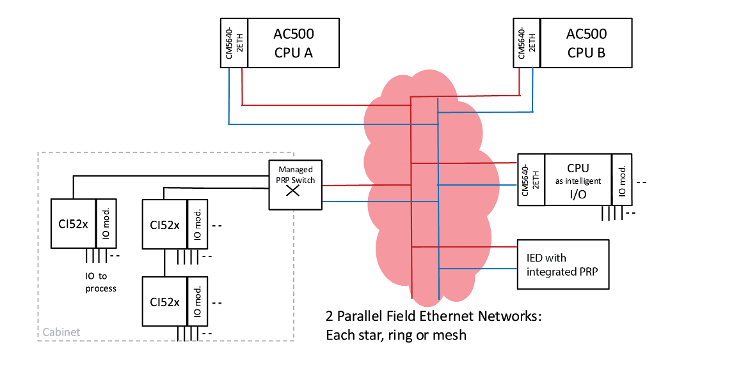The Parallel Redundancy Protocol (PRP) assumes parallel networks. Every device which connects in a redundant way has to have at least two physical Ethernet interfaces which duplicate all the Ethernet frames into the networks, by acting as a “DANP” (Dual attached node PRP). Also, all frames arrive on both interfaces, the device has to handle this duplication and decide which frames to discard. This means that the whole network infrastructure is cloned/doubled. All cables and all switches within each network create fully redundant networks. The protocol does not provide device redundancy itself, but full redundancy of the network without any switchover time, because all frames are sent over both networks so that failiure of any part of the network A does not influence the network B.
The PRP protocol is available as a licensed option for the CM5640-2ETH communication module which has two Ethernet interfaces. The protocol is used mainly in the electrification world where the fastest switchover is demanded (and where also IEC 61850 is used).
PRP protocol adds 6 bytes to each telegram.
The RCT consists of the following fields:
-
16-bit sequence number (SeqNr);
-
4-bit LAN identifier (LanId);
-
12-bit frame size (LSDUsize);
-
16-bit suffix (PRPsuffix)
The PRP protocol is not usable with older switches that have a limited Ethernet telegram length.
The PRP feature is supported by the Coupler Boot and System Firmware version 3.7.1, as well as CPU System Firmware version 3.8.1 and above.
-
Enabling the PRP
-
Licensing
-
Diagnosis


